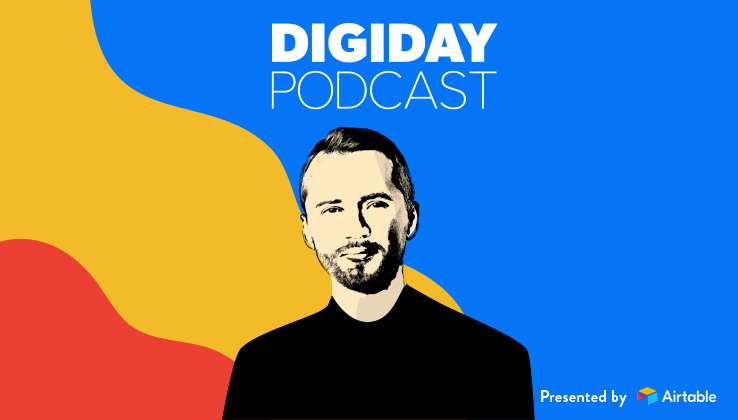NYT’s head of ads Sebastian Tomich: The role of the publisher is to sell ideas

Subscribe: iTunes | Google Play | Stitcher | Anchor
Native is not going to save publishers. Instead, agency services are sitting alongside subscriptions, display, commerce, licensing and other business lines.
“T Brand [Studio] is one of the many tools we have in the bag,” said Sebastian Tomich, global head of advertising and marketing solutions at The New York Times, on this week’s Digiday Podcast. “We and many other media companies will go from trying to find the silver bullet narrative of the future of advertising and being a services company now to admitting that we will be a diverse business. We’re going to sell many different things. The ad business of the future will be dominated by the platforms. The role of a publisher is to sell ideas. Branded content as a stand-alone line of business is going to go away.”
Edited highlights from the episode appear below:
Subscriptions compromise scale
“It’s a highly lucrative audience. Advertisers want to reach our subscribers. The more subscribers we have, the better it is for our ad business. The conflict is when it comes to scale. For some publishers, you do a viral post; you sell banner ads against it. That’s not our business. You could grow the subscription business so fast, and those subscribers are more engaged than the average person that comes from Facebook that views a page and leaves that you could end up with more scale. That’s a stretch, and it doesn’t necessarily happen. In terms of the levers for our department to grow the business, the one which has gone away is the surge in traffic and throwing more ads that go in programmatic revenue. We have to double down on direct relationships with clients.”
Trump news is a hard sell
“[Trump news] makes it harder to sell ads. There is no CMO who sits down and says, ‘I want to be next to Trump.’ Subscription-first business or not, it’s the New York Times’ responsibility to cover this stuff. Let’s say if we were an ad-first business, we would still have covered the stories in the same way. [Putting the] subscriptions business first and the tone of what’s going on in the world are not related. There are so many dark events happening around the world that it all converges on the homepage of the Times. CMOs say they don’t want that. We challenge it.”
The subscriptions business changed the Times’ relationships with platforms
“We’re much less dependent [on platforms]. Each platform has a different style when they present. One comes in and asks how we can grow and improve the business. Another platform comes and says they’re making a product change, and it’s going to crush our business. Prepare for it.”
More in Media

Media Briefing: The top trends in the media industry for 2025
This week’s Media Briefing takes a look at the top trends from 2025, from digital advertising revenue performance to AI licensing deals.

Digiday Scorecard: Publishers rate Big Tech’s AI licensing deals
Digiday has compiled a scorecard grading AI platforms to make sense of the growing number of players in the AI content licensing market.

Publishers are hunting for AI prompt data — now they’re starting to get it from third-party companies
Publishers are finally gaining some visibility into AI search, as new prompt data tools crack open a black box.








